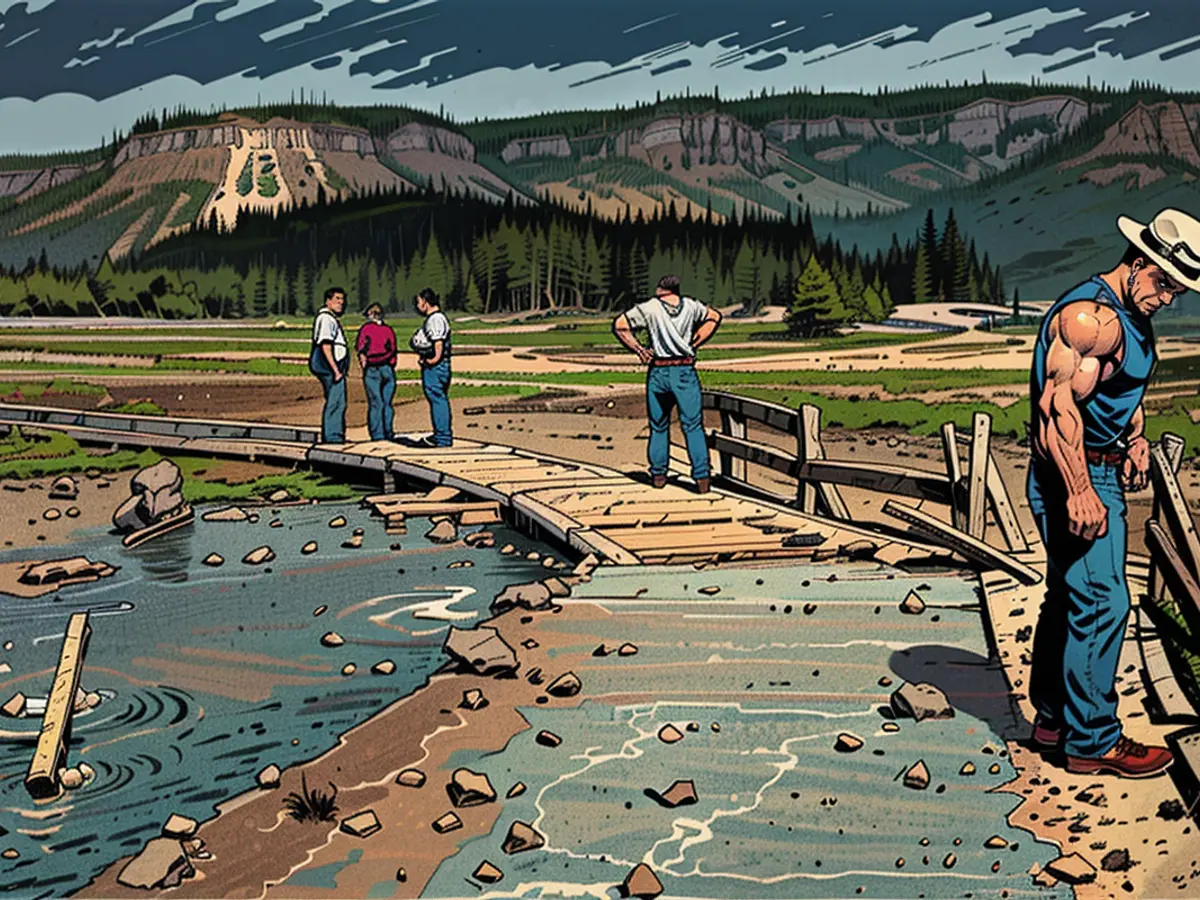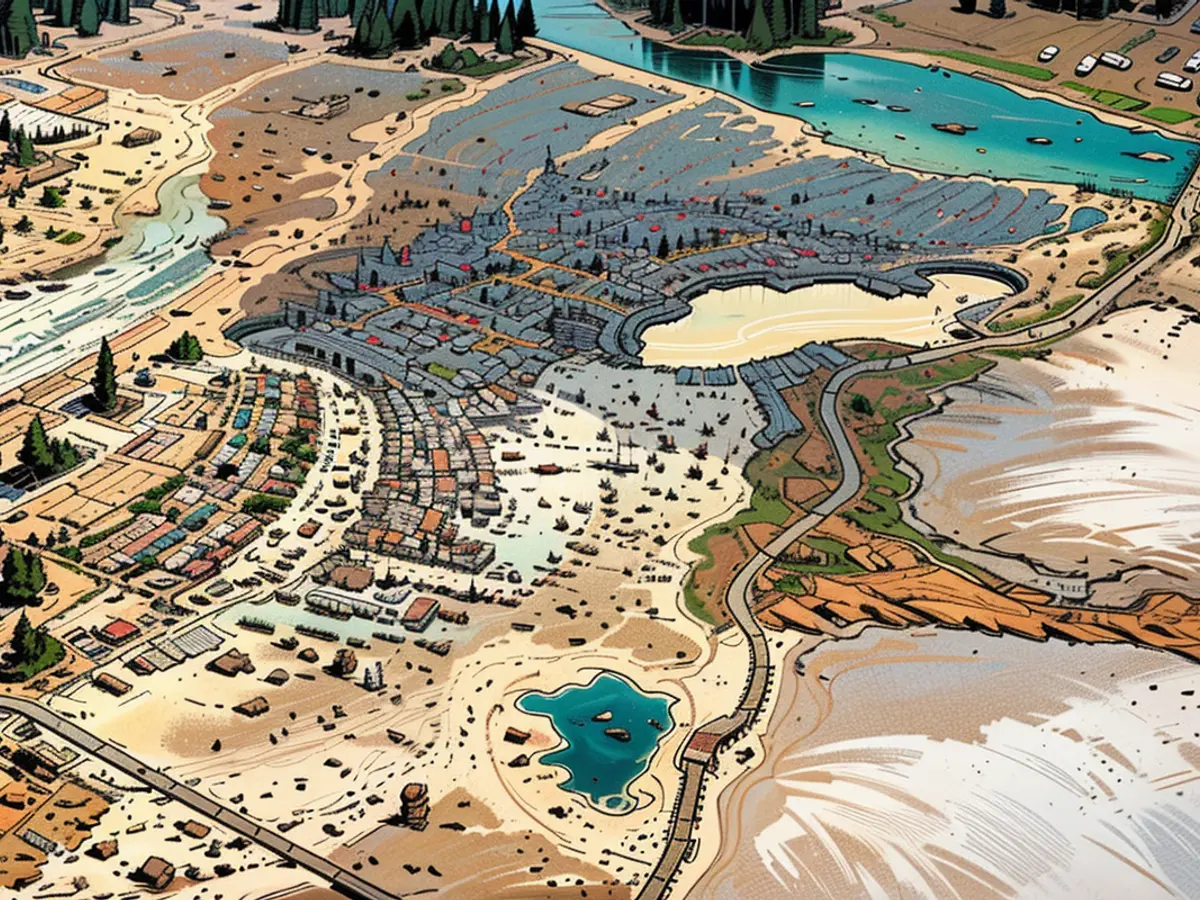Yellowstone’s popular Biscuit Basin is closed for the summer after hydrothermal explosion
Biscuit Basin – located about 2 miles northwest of the famed Old Faithful geyser in Wyoming – was shuttered for the rest of the summer out of concern for visitor safety, according to park officials.
The officials said the explosion, near the Sapphire Pool around 10 a.m. local time Tuesday, destroyed the walkway that surrounds the basin.
“The explosion, which sent steam and debris to a height of hundreds of feet above the ground, destroyed a nearby boardwalk and ejected grapefruit-sized rocks tens to hundreds of feet from the source,” the USGS said in a Wednesday news release. “Some blocks closest to the explosion site are about 3 feet (1 meter) wide and weigh hundreds of pounds.”
No injuries were reported after the incident, officials said.

The explosion altered the shape of the park’s famous Black Diamond Pool, officials noted. The Black Opal Pool was also affected.
“Both pools are murky due to debris, and the unstable ground around their edges occasionally slides into the water,” the release said. “Given the recent changes to the hydrothermal plumbing system, small explosions of boiling water from this area in Biscuit Basin continue to be possible over the coming days to months.”
Geologists with the USGS and the National Park Service continue to monitor conditions at Biscuit Basin – mapping the debris field, and sampling water to assess any changes in the shallow hydrothermal plumbing system.
Officials say Grand Loop Road, which surrounds Biscuit Basin and other notable sites in the park, remains open to vehicles. Other nearby thermal basins, like Black Sand Basin, are open as well, the release said.
A handful of hydrothermal explosions occur in the park each year, according to the USGS, however those typically occur in more remote areas.
“Hydrothermal explosions are violent and dramatic events resulting in the rapid ejection of boiling water, steam, mud, and rock fragments,” according to the USGS.
They “occur where shallow interconnected reservoirs of fluids with temperatures at or near the boiling point underlie thermal fields. These fluids can rapidly transition to steam if the pressure suddenly drops. Since vapor molecules take up much more space than liquid molecules, the transition to steam results in significant expansion and blows apart surrounding rocks and ejects debris,” the agency said.
Biscuit Basin and other popular geysers have experienced similar explosions in the past, officials said.
“Although smaller, hydrothermal explosions took place in 1989 at Porkchop Geyser in Norris Geyser Basin, and on April 15, 2024, from the Porcelain Terrace Area of Norris Geyser Basin,” the USGS said.
Additionally, a small hydrothermal explosion occurred from Wall Pool, in Biscuit Basin, in 2009, according to officials.
Large hydrothermal explosions occur on an average of every 700 years, the USGS said.
Tuesday’s explosion does not indicate a volcanic eruption is imminent, the USGS said in an earlier release. “Monitoring data show no changes in the Yellowstone region. Today’s explosion does not reflect activity within (the) volcanic system, which remains at normal background levels of activity. Hydrothermal explosions like that of today are not a sign of impending volcanic eruptions, and they are not caused by magma rising towards the surface.”
“Although large hydrothermal explosions are rare events on a human time scale, the potential for additional future events of the sort in Yellowstone National Park is not insignificant. Based on the occurrence of large hydrothermal explosion events over the past 16,000 years, an explosion large enough to create a 100-(meter)- (328-ft-) wide crater might be expected every few hundred years,” the USGS added.
CNN’s Jamiel Lynch contributed to this report.
Despite the closure of Biscuit Basin due to safety concerns, many other thermal basins in the park, such as Black Sand Basin, remain open for travel. Hydrothermal explosions, like the one that occurred in Biscuit Basin, are a natural phenomenon that occur in Yellowstone National Park on a relatively regular basis.
Read also:
- Fear of escalation in the Middle East: US Secretary of State Blinken travels to the region again
- Government circles: US Secretary of State Blinken to travel to Middle East again
- Bridging days 2024: How you can double your vacation this year
- Germany has wanderlust: how tour operators and airlines are looking ahead to the next travel year








